
Stavanger: The Gateway to Norway's Natural Wonders
Explore Stavanger, Norway's charming blend of history, culture, and natural beauty. Discover fjords, historic sites, and vibrant festivals in this coastal gem.
Stavanger, located on the southwestern coast of Norway, is a charming blend of history, culture, and stunning natural beauty. Known as the 'Oil Capital of Norway', this vibrant city offers a unique mix of modernity and tradition. Wander through the narrow, cobblestone streets of Gamle Stavanger, where you will find Europe’s best-preserved wooden houses, each painted in bright, cheerful colors. Stavanger is also a paradise for nature lovers. The city is the perfect starting point for exploring the famous Lysefjord and the iconic Preikestolen (Pulpit Rock) which offers breathtaking views of the fjord below. For those who enjoy hiking, the Kjeragbolten boulder is another must-see, providing an adventurous and rewarding experience. In addition to its natural attractions, Stavanger is also rich in cultural experiences. The city hosts the annual Stavanger Jazz Festival and the renowned Gladmat food festival, which showcases the best of Norwegian and international cuisine. The Norwegian Petroleum Museum offers an insightful look into the country’s oil industry, while the Stavanger Art Museum houses a fine collection of Norwegian and international art. Stavanger’s culinary scene is impressive, with numerous restaurants serving fresh seafood and local delicacies. Don’t miss trying the traditional 'komle', a Norwegian potato dumpling, or 'lutefisk', a dried fish delicacy. The bustling harbor area is lined with cozy cafes and bars, perfect for relaxing after a day of exploring. Whether you are seeking adventure, culture, or simply a peaceful retreat, Stavanger has something to offer for every traveler.
Local tips in Stavanger
- Visit during summer to experience the best weather and local festivals.
- Wear comfortable shoes for walking tours around Gamle Stavanger and hiking trips.
- Book your Preikestolen hike early in the morning to avoid crowds.
- Try local seafood dishes at the harbor restaurants for an authentic taste of Stavanger.
- Use public transportation or rent a bike to explore the city easily.
Stavanger: The Gateway to Norway's Natural Wonders
Stavanger, located on the southwestern coast of Norway, is a charming blend of history, culture, and stunning natural beauty. Known as the 'Oil Capital of Norway', this vibrant city offers a unique mix of modernity and tradition. Wander through the narrow, cobblestone streets of Gamle Stavanger, where you will find Europe’s best-preserved wooden houses, each painted in bright, cheerful colors. Stavanger is also a paradise for nature lovers. The city is the perfect starting point for exploring the famous Lysefjord and the iconic Preikestolen (Pulpit Rock) which offers breathtaking views of the fjord below. For those who enjoy hiking, the Kjeragbolten boulder is another must-see, providing an adventurous and rewarding experience. In addition to its natural attractions, Stavanger is also rich in cultural experiences. The city hosts the annual Stavanger Jazz Festival and the renowned Gladmat food festival, which showcases the best of Norwegian and international cuisine. The Norwegian Petroleum Museum offers an insightful look into the country’s oil industry, while the Stavanger Art Museum houses a fine collection of Norwegian and international art. Stavanger’s culinary scene is impressive, with numerous restaurants serving fresh seafood and local delicacies. Don’t miss trying the traditional 'komle', a Norwegian potato dumpling, or 'lutefisk', a dried fish delicacy. The bustling harbor area is lined with cozy cafes and bars, perfect for relaxing after a day of exploring. Whether you are seeking adventure, culture, or simply a peaceful retreat, Stavanger has something to offer for every traveler.
When is the best time to go to Stavanger?
Iconic landmarks you can’t miss
Gamle Stavanger
Explore Gamle Stavanger, a historic gem in Norway with charming wooden houses, vibrant art, and rich maritime heritage.

Sverd i fjell
Explore Sverd i fjell, the iconic monument symbolizing Norway's Viking legacy, set against the breathtaking backdrop of Hafrsfjord.

Norwegian Petroleum Museum
Explore Norway's oil heritage at the Norwegian Petroleum Museum in Stavanger, where interactive exhibits unveil the fascinating story of petroleum's impact on the nation.
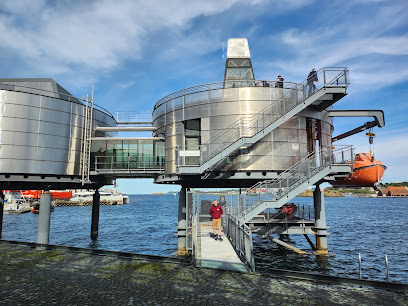
Fisketorget Stavanger
Discover the flavors of Norway at Fisketorget Stavanger, a bustling seafood market and restaurant on the scenic waterfront.
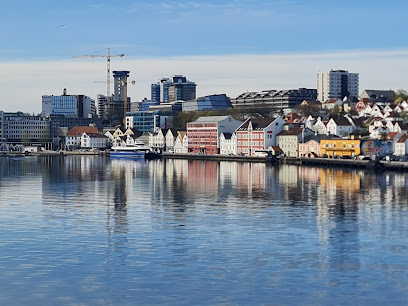
Fargegaten
Explore the vibrant colors and rich history of Fargegaten in Stavanger, a charming street lined with picturesque wooden houses and unique local shops.

Stavanger Cathedral
Explore the historical marvel of Stavanger Cathedral, Norway's oldest church, blending Romanesque and Gothic architecture with serene tranquility.

Norwegian Canning Museum
Explore Norway's canning heritage at the Norwegian Canning Museum, where history and culture blend seamlessly with engaging exhibits and delightful café offerings.

Vålandstårnet
Explore Stavanger's breathtaking vistas and rich history at Vålandstårnet, a picturesque landmark offering stunning views and cultural insights.

Stavanger City Museum
Discover Stavanger's heritage and cultural evolution at the Stavanger City Museum, a captivating journey through time in Norway's vibrant coastal city.

Stavangeren
Discover the heart of Stavanger's cultural scene at Stavangeren, a premier performing arts theater with diverse events and a lively atmosphere.

Stavanger tourist Information
Uncover the beauty of Stavanger at the Tourist Information center—your gateway to Norway's stunning landscapes and rich culture.

Stavanger Maritime Museum
Explore the maritime history and heritage of Norway at Stavanger Maritime Museum, a cultural treasure nestled along the picturesque waterfront.

Stavanger Art Museum
Explore the Stavanger Art Museum, a vibrant hub of creativity showcasing local and international art in the heart of Stavanger, Norway.

Jernaldergården
Explore Jernaldergården in Stavanger, a captivating Viking Age heritage site with immersive experiences and stunning natural beauty.
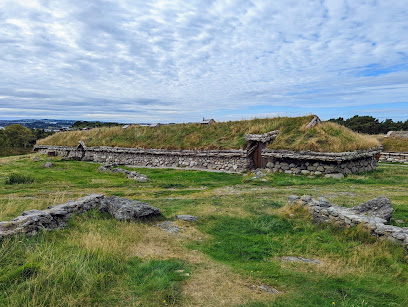
St Svithun's Church, Stavanger
Explore St Svithun's Church, a modern architectural marvel and serene place of worship in Stavanger, offering a unique spiritual and cultural experience.

Unmissable attractions to see
Gamle Stavanger
Discover the enchanting historic city center of Gamle Stavanger, with its charming wooden houses, vibrant culture, and stunning waterfront views.
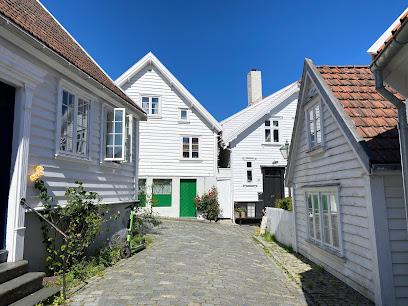
Norwegian Petroleum Museum
Explore the Norwegian Petroleum Museum in Stavanger, a unique journey through Norway's oil history with engaging exhibits and stunning harbor views.

Pulpit Rock
Discover the breathtaking beauty of Pulpit Rock, Norway's iconic cliff offering stunning views and unforgettable hiking experiences.

Stavanger Concert Hall
Experience world-class performances in the architectural beauty of Stavanger Concert Hall, a cultural gem in Norway’s vibrant city.
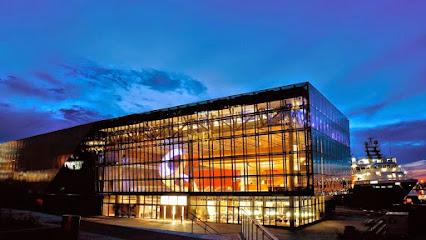
ODEON kino
Discover the cinematic delights of ODEON Kino in Stavanger, where film lovers unite in a modern, state-of-the-art setting.

Solastranden
Explore Solastranden, a stunning beach destination in Sola, Norway, where golden sands meet breathtaking coastal views and outdoor adventures await.
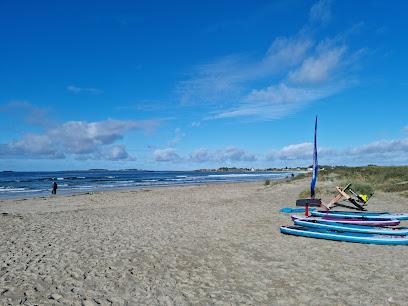
Fargegaten
Explore Fargegaten: Stavanger's colorful street filled with unique shops, vibrant art, and delightful local cuisine.

Stavanger Cathedral
Explore the rich history and stunning architecture of Stavanger Cathedral, the oldest cathedral in Norway, nestled in the heart of Stavanger.
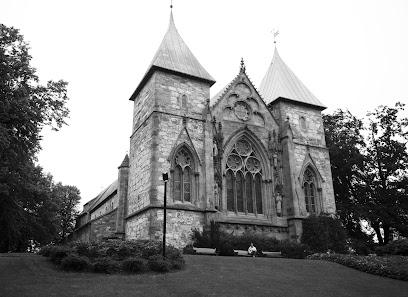
Rush trampoline park
Experience the thrill of jumping and playing at Rush Trampoline Park, Stavanger's top indoor amusement center for families and thrill-seekers.
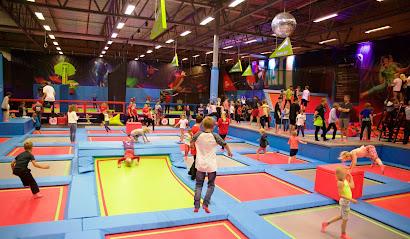
Sørmarka
Experience the serenity of Sørmarka Park, Stavanger's lush oasis of nature and recreation in the heart of Norway.

Turpost: Himakånå 357 moh
Experience breathtaking views and diverse hiking trails at Himakåna in Nedstrand, Norway – a must-visit for outdoor enthusiasts.

Stavanger City Museum
Explore the vibrant history and culture of Stavanger at the Stavanger City Museum, a captivating tourist attraction for all ages.
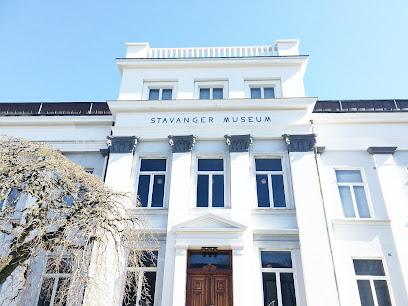
Vålandstårnet
Experience the breathtaking views and rich heritage at Vaalandstarnet, a historical landmark in Stavanger, Norway.

Stavanger City Museum
Explore the cultural and natural history of Stavanger at the renowned Stavanger City Museum, a must-visit for every tourist.

Museum of Archaeology, University of Stavanger
Explore Norway's ancient history at the Museum of Archaeology in Stavanger, where fascinating artifacts and interactive experiences await.
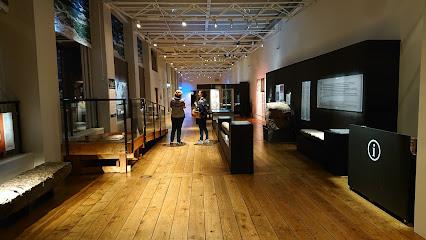
Essential places to dine
Døgnvill Burger Stavanger
Experience gourmet burgers at Døgnvill Burger Stavanger - where quality meets flavor in an inviting atmosphere perfect for tourists.

Fisketorget Stavanger
Experience authentic Norwegian cuisine at Fisketorget Stavanger – where fresh seafood meets stunning fjord views.

Olivia Torget
Experience authentic Italian cuisine at Olivia Torget in Stavanger – where every dish tells a story.

Villa 22 Trattoria & Bar
Experience the flavors of Italy at Villa 22 Trattoria & Bar in Stavanger - where delicious food meets warm hospitality.

Pasha Stavanger
Experience authentic Turkish cuisine at Pasha Restaurant in Stavanger – where every dish tells a story.

Harry Pepper
Discover authentic Mexican flavors at Harry Pepper in Stavanger - where vibrant cuisine meets a lively atmosphere.

Phileas Fogg
Experience global flavors at Phileas Fogg in Stavanger—a culinary adventure inspired by travel.
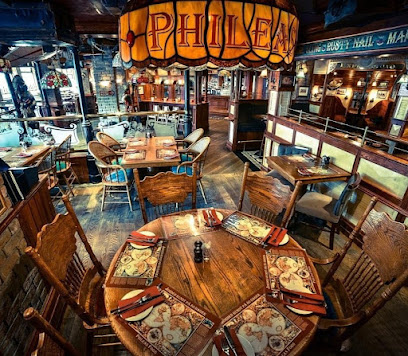
Zouq Restaurant & Take away
Discover the rich flavors of Pakistan at Zouq Restaurant & Takeaway in Stavanger - a culinary gem offering authentic dishes and warm hospitality.

Matbaren Bistro by Renaa
Indulge in exquisite French cuisine at Matbaren Bistro by Renaa in Stavanger - where every meal is a delightful experience.
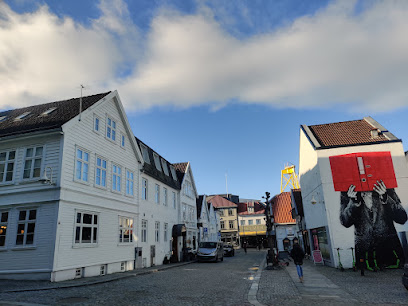
Noodle Noodle
Discover authentic Asian flavors at Noodle Noodle in Stavanger - where every dish tells a story of culinary tradition.

Gådjå Etiopisk Restaurant
Experience authentic Ethiopian cuisine at Gådjå Etiopisk Restaurant in Stavanger – a culinary journey filled with flavor and tradition.

Mogul India Restaurant
Experience authentic Indian cuisine at Mogul India Restaurant in Stavanger – where every dish tells a story of rich flavors and tradition.

På Kornet
Experience culinary excellence at På Kornet - Stavanger's premier gastropub offering local flavors in a vibrant atmosphere.

Spisoh - South Indian Restaurant
Savor authentic South Indian flavors at Spisoh in Stavanger – your destination for delicious biryanis and vegetarian delights.

Firelake Grill House & Cocktail Bar
Experience culinary excellence at Firelake Grill House & Cocktail Bar in Stavanger—where local flavors meet sophisticated dining.

Markets, malls and hidden boutiques
AMFI Madla
Discover shopping, dining, and delightful experiences at AMFI Madla, a premier destination in Hafrsfjord, Norway.

Norwegian Outlet Stavanger
Explore Norwegian Outlet Stavanger for unbeatable deals on fashion and unique local products in a charming shopping environment.

Bøker og Børst
Discover Bøker og Børst in Stavanger, where literature meets lively conversation in a cozy pub and coffee shop atmosphere.

Outland Stavanger
Explore the wonders of Outland Stavanger, a haven for comic book lovers, gamers, and toy collectors in the heart of Stavanger, Norway.

Arkaden Torgterrassen
Explore Arkaden Torgterrassen in Stavanger for a delightful shopping experience with a variety of stores, cafes, and local charm.
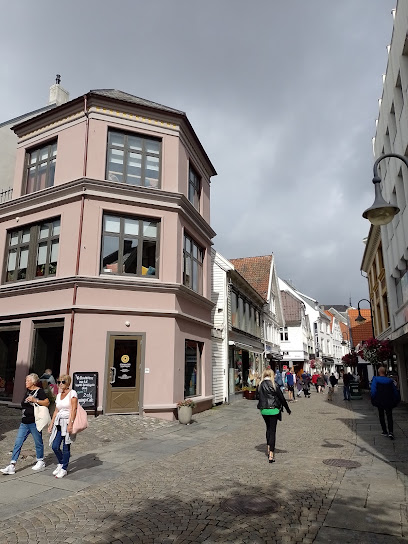
Herbarium Shopping Stavanger
Explore the vibrant Herbarium Shopping mall in Stavanger for a delightful array of stores, dining options, and local charm that captures the spirit of Norway.

Mediegården
Explore Mediegården in Stavanger for a perfect blend of shopping, dining, and entertainment amidst a vibrant atmosphere.

Magasin Blaa
Experience the warmth of home at Magasin Blaa, Stavanger's prime apartment rental agency, perfect for an unforgettable stay in Norway.

NEW YORKER
Explore the latest fashion trends at NEW YORKER in Stavanger, offering stylish clothing and accessories for all ages.

Torgterrassen
Discover Torgterrassen: Stavanger's premier shopping mall blending local charm with global brands, dining, and entertainment.

Søstrene Grene
Explore Søstrene Grene in Stavanger for art supplies, home décor, and creative essentials in a charming shopping experience.

Birkemo AS
Discover Birkemo AS in Stavanger for a unique shopping experience featuring models, costumes, and a variety of hobby supplies that inspire creativity.

Godtebyen
Discover the sweet side of Stavanger at Godtebyen, your go-to candy and chocolate store for delicious treats and local delights.

Blåveis
Experience the vibrant music scene at Blåveis, Stavanger's unique bar and record store, offering live performances and a diverse selection of drinks.

Havana-Magasinet AS
Discover the rich world of tobacco at Havana-Magasinet, Stavanger's dedicated tobacco shop offering quality cigars and accessories for enthusiasts.

Essential bars & hidden hideouts
Cardinal Pub
Discover Cardinal Pub, Stavanger's premier destination for craft beers and vibrant nightlife, where every visit promises new experiences and flavors.

Beverly Hills Fun Pub
Discover the lively Beverly Hills Fun Pub in Stavanger, where refreshing drinks and a vibrant atmosphere await in the heart of Norway's nightlife.

The Irishman
Experience the vibrant spirit of Ireland at The Irishman in Stavanger, where delicious food and lively atmosphere create unforgettable memories.

Hanekam
Discover the vibrant nightlife at Hanekam, Stavanger's premier bar, offering a lively atmosphere and a diverse drink selection.

Pjolter & Punsj
Experience the creative cocktail culture at Pjolter & Punsj, Stavanger’s vibrant bar offering unique drinks and a lively atmosphere.

Piren pub
Discover the lively Piren Pub in Stavanger, where local brews meet a welcoming atmosphere for an unforgettable night out.

Munken
Discover Munken Bar in Stavanger - a lively pub known for its local charm, extensive drink menu, and vibrant nightlife.

Broremann Bar
Experience the lively nightlife of Stavanger at Broremann Bar, where great drinks and a welcoming atmosphere await every visitor.

Cementen
Experience the vibrant nightlife of Stavanger at Cementen, a waterfront bar offering great drinks, live music, and a welcoming atmosphere.

Bar Bache
Experience the lively spirit of Ireland at Bar Bache, Stavanger's go-to Irish pub for great food, drinks, and live music.

Gnu Bar
Experience the vibrant nightlife of Stavanger at Gnu Bar, where great drinks meet a lively atmosphere for an unforgettable night out.
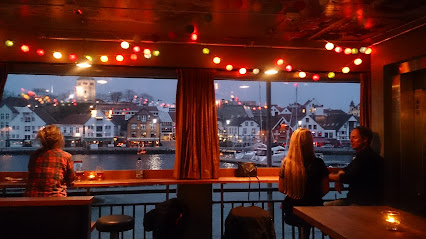
Bar Negroni
Discover the vibrant atmosphere and exquisite cocktails at Bar Negroni, Stavanger's go-to bar for a memorable night out.

Heidi's Bier Bar Stavanger
Discover the vibrant nightlife at Heidi's Bier Bar in Stavanger, offering a unique blend of local and international beers in a lively atmosphere.

Bardello
Experience Stavanger's vibrant nightlife at Bardello, where expertly crafted cocktails meet an artistic ambiance in the heart of Øvre Holmegate.

Alexander Pub
Discover the vibrant atmosphere of Alexander Pub in Stavanger, where local brews and community spirit come together for an unforgettable experience.

Travel experiences inspired by this city
Explore more travel diariesLocal Phrases
-
- HelloHallo
[ha-lu] - GoodbyeHa det
[ha de] - YesJa
[ya] - NoNei
[nay] - Please/You're welcomeVær så god
[ver so go] - Thank youTakk
[tak] - Excuse me/SorryUnnskyld
[oon-shuld] - How are you?Hvordan har du det?
[vor-dan har du de] - Fine. And you?Bra. Og du?
[bra oh du] - Do you speak English?Snakker du engelsk?
[sna-kker du engelsk] - I don't understandJeg forstår ikke
[yay for-stor ee-neh]
- HelloHallo
-
- I'd like to see the menu, pleaseJeg vil gjerne se menyen, takk
[yay vil yer-neh seh me-nyen tak] - I don't eat meatJeg spiser ikke kjøtt
[yay spee-ser ee-neh shut] - Cheers!Skål!
[skol] - I would like to pay, pleaseJeg vil gjerne betale, takk
[yay vil yer-neh be-ta-le tak]
- I'd like to see the menu, pleaseJeg vil gjerne se menyen, takk
-
- Help!Hjelp!
[yelp] - Go away!Gå vekk!
[go veck] - Call the Police!Ring politiet!
[ring po-lee-tee-et] - Call a doctor!Ring en lege!
[ring en le-geh] - I'm lostJeg er borte
[yay er bohr-te] - I'm illJeg er syk
[yay er sook]
- Help!Hjelp!
-
- I'd like to buy...Jeg vil kjøpe...
[yay vil shur-pe] - I'm just lookingJeg bare ser
[yay ba-re ser] - How much is it?Hvor mye koster det?
[vor mye kos-ter de] - That's too expensiveDet er for dyrt
[de ehr for deert] - Can you lower the price?Kan du senke prisen?
[kan du sen-ke pree-sen]
- I'd like to buy...Jeg vil kjøpe...
-
- What time is it?Hva er klokka?
[va er klok-ka] - It's one o'clockKlokka er ett
[klok-ka er et] - Half past (10)Halv ti
[halv tee] - MorningMorgen
[mor-gen] - AfternoonEttermiddag
[et-ter-mee-dag] - EveningKveld
[kveld] - YesterdayI går
[ee gor] - TodayI dag
[ee dag] - TomorrowI morgen
[ee mor-gen] - 1En
[en] - 2To
[toh] - 3Tre
[treh] - 4Fire
[fee-reh] - 5Fem
[fem] - 6Seks
[seks] - 7Sju
[s-yoo] - 8Åtte
[ot-teh] - 9Ni
[nee] - 10Ti
[tee]
- What time is it?Hva er klokka?
-
- Where's a/the...?Hvor er en/et...
[vor er en/et] - What's the address?Hva er adressen?
[va er ad-dress-en] - Can you show me (on the map)?Kan du vise meg (på kartet)?
[kan du vee-se mey (poh kar-teh)] - When's the next (bus)?Når går neste (buss)?
[nar gor nest-eh (booss)] - A ticket (to ....)En billett (til ...)
[en bi-let (teel)]
- Where's a/the...?Hvor er en/et...
History of Stavanger
-
Stavanger's history dates back to the Viking Age. It was an important hub during this period, serving as a base for seafaring warriors. Evidence of this era can still be found in the numerous archaeological sites scattered around the region.
-
Stavanger was officially founded in 1125 when Stavanger Cathedral was completed. The establishment of the cathedral was crucial for the town's growth and marked the beginning of its recorded history.
-
In the 13th century, Stavanger became a significant trading post under the influence of the Hanseatic League. The city's strategic location on the southwest coast of Norway made it an essential center for commerce and trade.
-
The Reformation in the 16th century brought significant changes to Stavanger. The town experienced economic decline as it lost its status as a religious center. However, it slowly began to recover and adapt to the new religious and political landscape.
-
The 19th century saw Stavanger thrive once more with the herring boom. The abundant fish stocks led to an economic revival, making Stavanger one of Norway's most important fishing ports. This period also saw the establishment of canneries, which became a vital industry for the city.
-
The discovery of oil in the North Sea in the late 1960s transformed Stavanger into the oil capital of Norway. The city's economy and infrastructure underwent rapid development, attracting international businesses and workers, and significantly boosting its growth.
-
Stavanger has also made a name for itself as a cultural hotspot. In 2008, it was designated a European Capital of Culture, a title that underscores its vibrant arts scene, rich history, and diverse cultural offerings. The event brought international attention and further solidified its status as a cultural center.
Stavanger Essentials
-
Stavanger is accessible by various means. Stavanger Airport, Sola (SVG) serves both international and domestic flights and is located about 14 kilometers from the city center. From the airport, you can take a taxi, airport bus, or rent a car. For those traveling by train, the Norwegian State Railways (NSB) connects Stavanger to Oslo and other major cities. Additionally, ferries operate from Denmark and the UK directly to Stavanger, offering a scenic journey through the fjords.
-
Stavanger boasts an efficient public transportation system including buses operated by Kolumbus. Tickets can be purchased via the Kolumbus app, at ticket machines, or directly from the driver (cash only). Taxis are readily available, and ride-hailing services like Uber are also operational. For those preferring to explore on foot, Stavanger's compact city center is very walkable. Bicycle rentals are available for those who wish to explore at a leisurely pace.
-
The official currency in Norway is the Norwegian Krone (NOK). Credit and debit cards are widely accepted in most establishments, including shops, restaurants, and hotels. It's advisable to carry some cash for smaller purchases or in places where card payment is not possible. ATMs are plentiful throughout the city for cash withdrawals.
-
Stavanger is generally a safe city for tourists. However, as in any urban area, it is recommended to stay vigilant. Areas like Vågen and the nightlife district can get crowded, so keep an eye on your belongings. Avoid walking alone at night in poorly lit areas. Petty theft such as pickpocketing can occur, especially in tourist-heavy zones.
-
In case of an emergency, dial 112 for immediate assistance. This number connects you to the police, fire department, and medical services. Stavanger University Hospital (SUS) provides comprehensive medical care. Pharmacies are accessible throughout the city for minor health concerns. It is advisable to carry travel insurance that covers medical emergencies.
-
Fashion: Do wear comfortable clothing suitable for variable weather. Layers are recommended. Don’t wear overly revealing clothing, especially in more traditional settings. Religion: Do respect religious sites by dressing modestly and remaining quiet. Don’t take photographs where prohibited. Public Transport: Do validate your ticket before boarding. Don’t eat or drink on public transport. Greetings: Do greet people with a firm handshake and maintain eye contact. Don’t use first names unless invited to do so. Eating & Drinking: Do try local dishes and seafood. Don’t leave a tip, as service charges are typically included.
-
To experience Stavanger like a local, visit the Old Stavanger (Gamle Stavanger) with its charming wooden houses. Attend local festivals such as the Gladmat food festival. Explore the local markets, especially the fish market, for fresh produce and seafood. For outdoor enthusiasts, hiking to Preikestolen (Pulpit Rock) offers breathtaking views. Engage with residents, who are usually friendly and willing to share insights about the city’s history and culture.
Trending Landmark in Stavanger
-
Gamle Stavanger
-
Sverd i fjell
-
Norwegian Petroleum Museum
-
Fisketorget Stavanger
-
Fargegaten
-
Stavanger Cathedral
-
Norwegian Canning Museum
-
Vålandstårnet
-
Stavanger City Museum
-
Stavangeren
-
Stavanger tourist Information
-
Stavanger Maritime Museum
-
Stavanger Art Museum
-
Jernaldergården
-
St Svithun's Church, Stavanger
Nearby Cities to Stavanger
-
Things To Do in Bergen
-
Things To Do in Kristiansand
-
Things To Do in Fredrikstad
-
Things To Do in Oslo
-
Things To Do in Skagen
-
Things To Do in Aalborg
-
Things To Do in Frederikshavn
-
Things To Do in Viborg
-
Things To Do in Herning
-
Things To Do in Randers
-
Things To Do in Silkeborg
-
Things To Do in Ålesund
-
Things To Do in Gothenburg
-
Things To Do in Aarhus
-
Things To Do in Esbjerg















